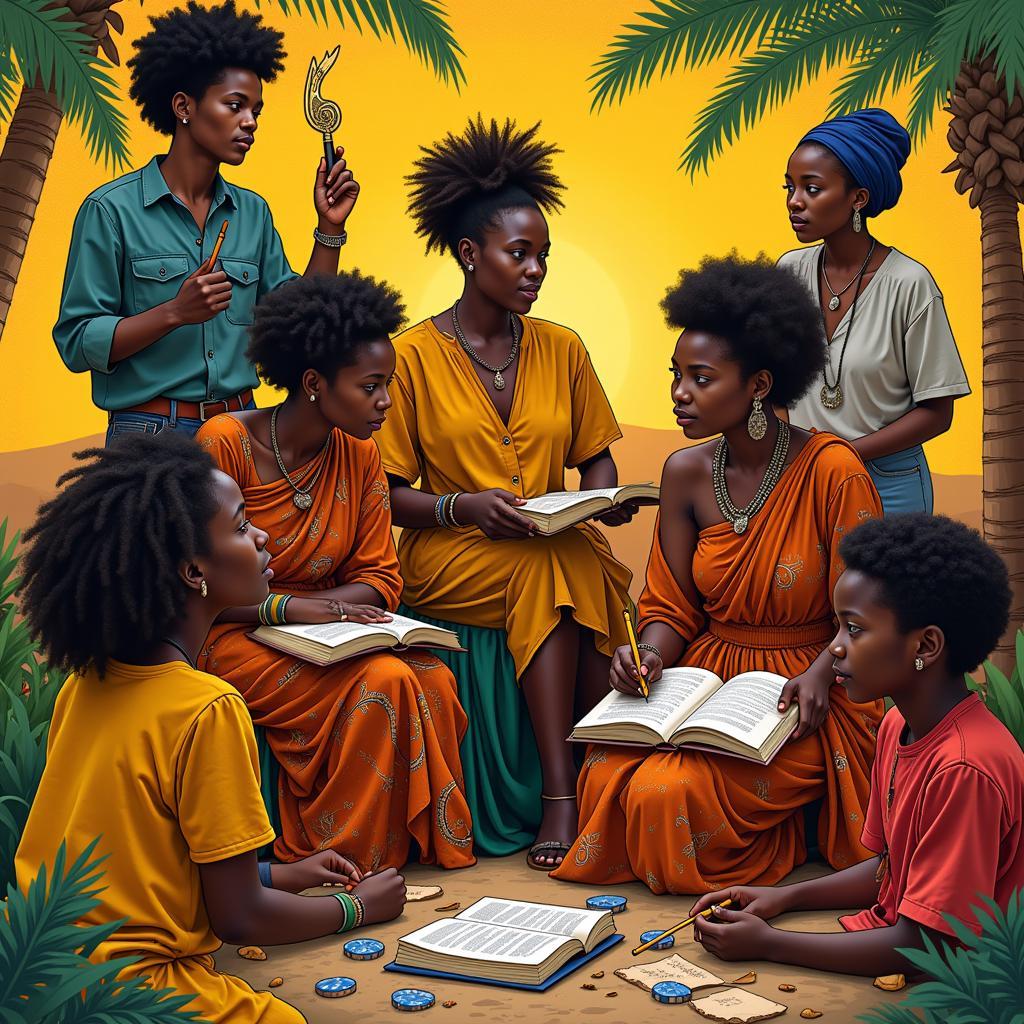The African Boubou: A Timeless Garment of Style and Tradition
The boubou, a flowing, loose-fitting robe, is a staple garment in many African cultures. It is a symbol of elegance, tradition, and cultural pride. From the bustling streets of Dakar to the serene landscapes of Mali, the boubou remains a beloved and enduring piece of clothing.
The boubou’s origins can be traced back centuries, with different variations evolving across the continent. The garment is typically made from luxurious fabrics like cotton, silk, or brocade, often adorned with intricate embroidery, beadwork, or hand-painted designs. The vibrant colors and patterns reflect the rich cultural tapestry of Africa, with each region boasting its unique style and aesthetic.
Different Styles of the Boubou
The boubou comes in various styles, each with its own name and distinct characteristics. Here are a few popular examples:
- Grand Boubou: This is the most common style, featuring a long, flowing robe with wide sleeves. It is often worn for special occasions like weddings, festivals, and religious ceremonies.
- Dashiki: This short-sleeved, knee-length boubou is popular in West Africa, particularly in Nigeria and Ghana. It is known for its bold colors and geometric patterns.
- Kaftan: A long, flowing robe with wide sleeves and a V-neckline, the kaftan is a popular style in North Africa and the Middle East.
- Buba: This loose-fitting, knee-length shirt is often worn with trousers and is a staple in many West African countries.
The Significance of the Boubou
The boubou holds a significant cultural and social meaning in many African societies. Here are a few key aspects:
- Symbol of Status and Identity: The type of fabric, design, and embellishments on a boubou can indicate the wearer’s social status, wealth, or tribal affiliation.
- Representation of Tradition: The boubou is often passed down through generations, carrying with it the legacy and heritage of a family or community.
- Expression of Creativity: The intricate designs and colors of the boubou showcase the artistic skills and cultural expression of its creators.
- Clothing for Special Occasions: The boubou is often reserved for special events like weddings, religious ceremonies, and festivals.
The Modern Boubou
While the boubou is deeply rooted in tradition, it has also embraced contemporary trends and styles. Modern designers are incorporating new fabrics, textures, and embellishments to create unique and stylish interpretations of the traditional garment. The boubou is increasingly gaining popularity globally, with fashion houses and designers incorporating its distinctive elements into their collections.
“The boubou is more than just a garment; it is a symbol of our heritage, a testament to our creativity, and an embodiment of our cultural pride.” – Aisha Diop, renowned Senegalese fashion designer.
FAQ
Q: What is the difference between a boubou and a kaftan?
A: The boubou is a general term for a loose-fitting robe in Africa, while the kaftan is a specific style of boubou with wide sleeves and a V-neckline, popular in North Africa and the Middle East.
Q: Can men wear boubous?
A: Yes, the boubou is worn by both men and women in many African cultures.
Q: Where can I find a boubou?
A: You can find boubous in many African markets, boutiques, and online retailers.
Q: Are boubous expensive?
A: The cost of a boubou varies depending on the fabric, design, and quality. You can find boubous at a range of price points.
Conclusion
The African Boubou is a timeless garment that continues to capture hearts and minds around the world. From its rich history and cultural significance to its modern-day interpretations, the boubou remains a symbol of beauty, elegance, and African pride. It is a testament to the enduring power of tradition and creativity, and a reminder of the unique and diverse cultural tapestry of Africa.
